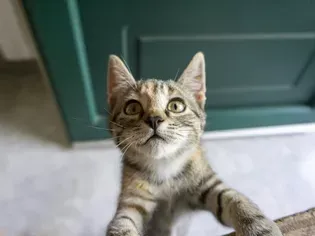What Is Classical Conditioning for Cats?
Updated on 04/26/24

Unveiling the Secrets of Classical Conditioning for Cats: A Comprehensive Guide to Training Your Feline Friend
Introduction
As a cat owner, you've likely witnessed the remarkable ability of your feline companion to learn and adapt to their environment. One of the key mechanisms behind this learning process is classical conditioning, a fundamental behavioral principle that shapes our understanding of animal behavior. By harnessing the power of classical conditioning, you can effectively train your cat, optimize their well-being, and strengthen your bond with them. In this comprehensive guide, we will delve into the intricacies of classical conditioning, exploring its principles, applications, and practical examples to empower you in your journey as a cat caregiver.
Understanding Classical Conditioning
Classical conditioning, pioneered by the renowned psychologist Ivan Pavlov, is a form of associative learning that involves pairing a neutral stimulus with a meaningful stimulus, leading to a learned response. In Pavlov's classic experiment, he paired the sound of a bell (neutral stimulus) with the presentation of food (meaningful stimulus), causing dogs to salivate at the sound of the bell alone, even in the absence of food.
Elements of Classical Conditioning
1. Unconditioned Stimulus (US): A stimulus that naturally elicits a response without prior learning. In the case of Pavlov's dogs, the food was the unconditioned stimulus, as it naturally triggered salivation.
2. Unconditioned Response (UR): The natural, unlearned response to the unconditioned stimulus. Salivation was the unconditioned response to the presentation of food.
3. Conditioned Stimulus (CS): A neutral stimulus that, after repeated pairing with the unconditioned stimulus, begins to elicit a response similar to the unconditioned response. In Pavlov's experiment, the sound of the bell became the conditioned stimulus, as it eventually triggered salivation in the dogs.
4. Conditioned Response (CR): The learned response elicited by the conditioned stimulus. In this case, salivation in response to the sound of the bell was the conditioned response.
Applications of Classical Conditioning in Cat Training
Classical conditioning offers a powerful tool for training cats, as it allows you to associate specific behaviors with desired outcomes, thus reinforcing positive actions and discouraging undesirable ones.
1. Litter Box Training: By pairing the litter box with a pleasant experience, such as providing a treat or praise immediately after the cat uses it, you can encourage your cat to consistently use the designated area for elimination.
2. Reducing Scratching: You can associate the sound of a loud noise (e.g., clapping or hissing) with the act of scratching furniture. This negative association will deter your cat from engaging in this destructive behavior.
3. Training with a Clicker: A clicker is a small device that produces a distinctive sound. By consistently pairing the click with a treat or other reward, you can create a powerful conditioned stimulus that signifies positive behavior.
Examples of Classical Conditioning in Cats
1. Fear of the Vacuum Cleaner: If a kitten has a negative experience with a vacuum cleaner, such as being startled by its loud noise, they may develop a fear of the appliance. This fear is a conditioned response to the conditioned stimulus (vacuum cleaner) that was paired with the unconditioned stimulus (negative experience).
2. Preference for Certain Foods: Cats often develop preferences for specific foods based on their early experiences. If a kitten is consistently fed a particular brand or flavor of food, they may develop a strong preference for that food, even if other options are available.
3. Association of Scratching with a Specific Surface: If a cat repeatedly scratches a particular surface, such as a carpet or sofa, they may associate that surface with the act of scratching, making them more likely to scratch it again in the future.
Conclusion
Understanding classical conditioning is essential for effective cat training and behavior modification. By harnessing its principles, you can positively reinforce desired behaviors, discourage unwanted ones, and create a harmonious and enriched environment for your feline companion. Remember, patience, consistency, and positive reinforcement are key to successful classical conditioning. Embrace this powerful learning mechanism and embark on a rewarding journey with your furry friend.
Explore More Pets

Cat Behavior Problems
How to Stop Aggression in Kittens

Long-Haired Cat Breeds
Siberian Cat: Breed Profile, Characteristics, & Care

Cat Behavior Problems
How to Stop Kittens From Scratching and Biting

Long-Haired Cat Breeds
Turkish Angora: Cat Breed Profile, Characteristics & Care

Basic Training
How to Socialize Your Kitten

Short-Haired Cat Breeds
Cute Pictures & Facts About Calico Cats & Kittens

Litter Box Training
Training Your Kitten to Use the Litter Box

Long-Haired Cat Breeds
10 Fun Facts About White Cats